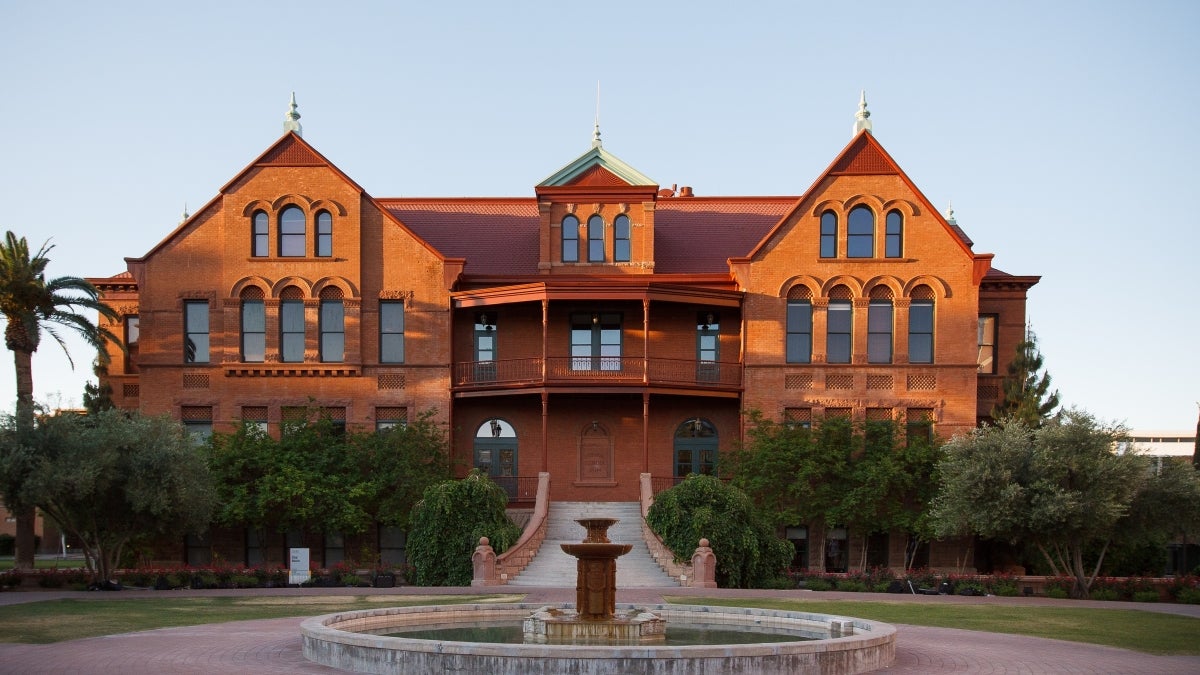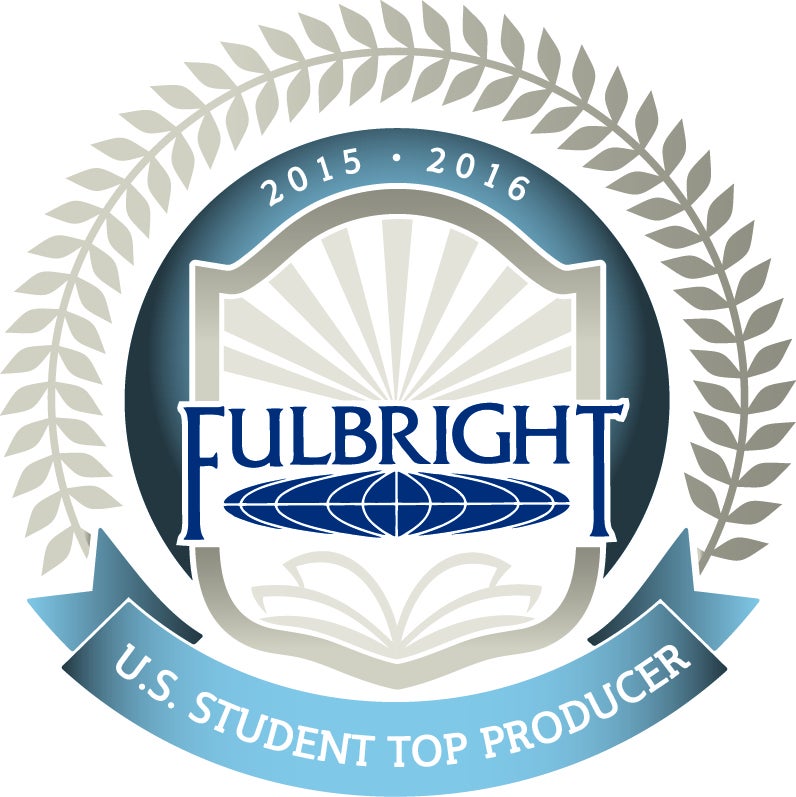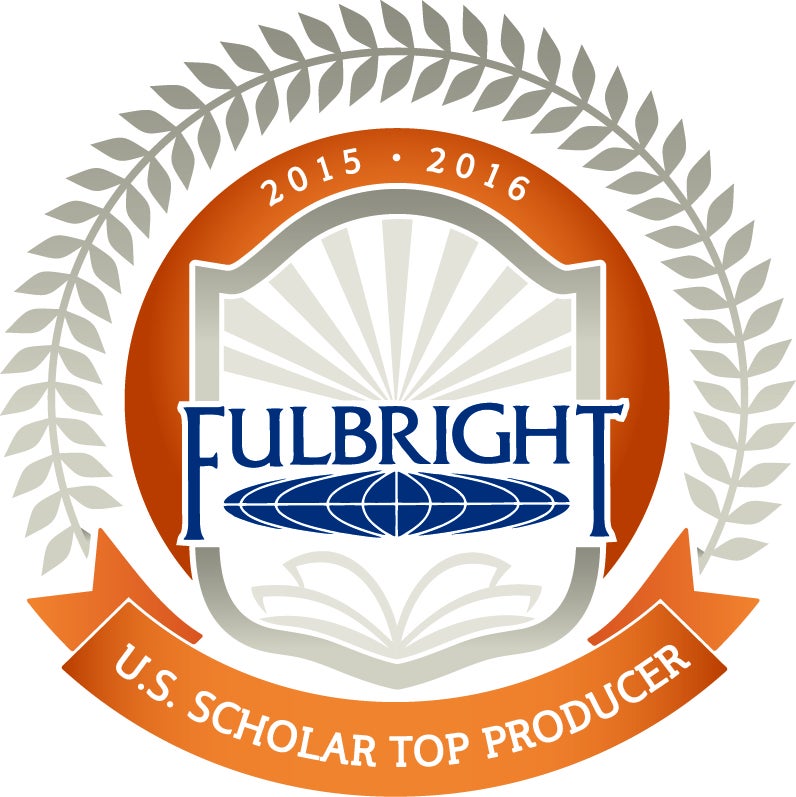Editor's note: This story is being highlighted in ASU Now's year in review. To read more top stories from 2016, click here.
Arizona State University was the top producer of prestigious Fulbright scholars among research institutions for 2015-2016, with 10 awards to faculty members.
In addition, ASU was in fifth place among research institutions in producing the highest number of Fulbright scholarships to students, with 22.
The Fulbright is the U.S. government’s flagship international educational exchange program.
"The tremendous number of Fulbrights awarded to our students and scholars spotlights the success of ASU's top quality faculty nurturing high caliber students, regardless of their backgrounds before they arrived at ASU," said Mark Searle, executive vice president and university provost.
"Their research and service around the world further expands the university's global engagement."
The top producers of Fulbright students were Harvard University, with 31, the University of Michigan, 29; and Northwestern and Yale universities, with 26 each.
Kyle Mox, who coordinates the program for ASU students, said that ASU has ranked in the top 10 nine times since 2004-2005.
He also noted ASU’s high acceptance rate — 22 grants out 75 student applicants, or 29 percent. Comparatively, Harvard’s rate was 22 percent and the University of Michigan’s was 23 percent.
“What these numbers don’t show is how hard each of these applicants worked,” said Mox, who also is associate dean of Barrett, the Honors College, noting that the process begins up to six months before the deadline. “It isn’t uncommon to write five to 10 drafts of the application essays. These results are a testament to the work ethic of our students and faculty,”
Mox said that faculty are vital to advancing the student winners.
“While the Office of National Scholarships Advisement certainly plays an important role, these outcomes would not be possible without the support of ASU faculty members — who not only mentor and write letters of recommendation for our students, but also serve on our campus screening committees,” he said.
ASU’s 22 Fulbright students are studying abroad now, and the university has 30 students who are semi-finalists for next year’s awards, Mox said.
The Fulbright program, created in 1946 to increase mutual understanding between Americans and the people of other countries, provides the opportunity to study, teach and conduct research abroad. The program awards about 1,900 grants annually in all fields of study and operates in more than 160 countries. The sponsor is the U.S. Department of State's Bureau of Educational and Cultural Affairs.
Faculty generally stay abroad anywhere from two months to a full academic year. This award is often taken in conjunction with research, development or sabbatical leave options. ASU faculty Fulbright scholars have canvassed the world serving in different countries and institutions.
On March 23, ASU will hold a “Fulbright Day” at the Memorial Union from 1 to 5 p.m. Representatives from Fulbright will describe the programs. A faculty session will be held from 1 to 2:30 and a session for current undergraduate and graduate students will run from 2:30 to 4, followed by a reception for Fulbright alumni and international Fulbright students and scholars who are currently studying at ASU.
More Local, national and global affairs

Overdose crisis involves more than opioids, says ASU social work professor
News coverage about the escalating number of drug overdoses in the United States can lead many to conclude that so long as you’re not overdosing yourself, the crisis doesn’t really affect you.Wrong,…

What’s next for unions? ASU center investigates evolving strategies in new report
Port workers hanging up their hats on the East Coast. Starbucks employees putting down their aprons before Christmas. Ski patrollers signing off in Park City as fresh powder piles up. The past year…

Protecting national security in a rapidly changing world
As the 21st century dawned, the challenges facing our nation and the world — such as cyberthreats, resource scarcity and space security — became too big to solve with traditional research methods.…


